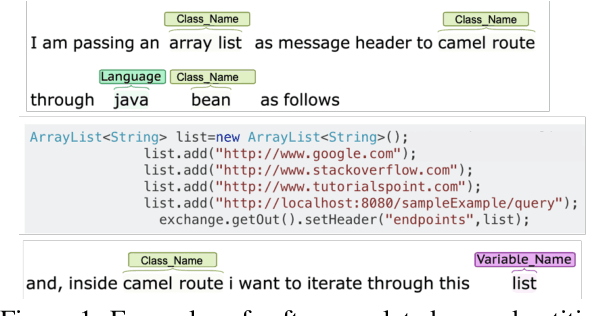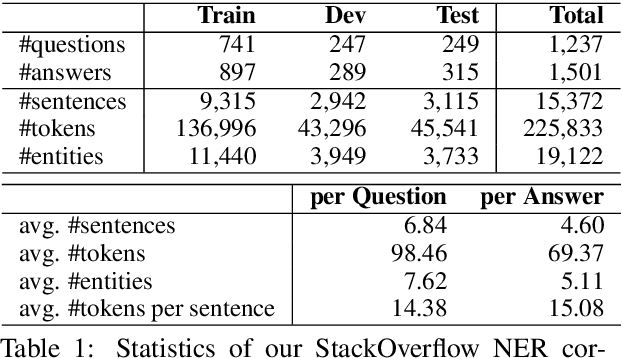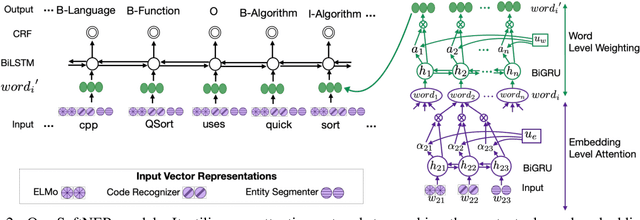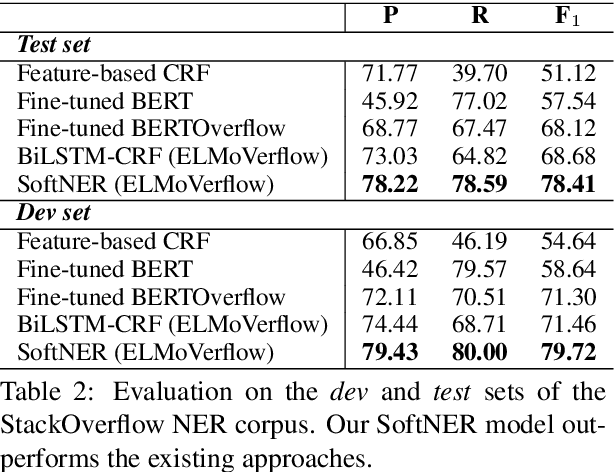Jeniya Tabassum
WNUT-2020 Task 1 Overview: Extracting Entities and Relations from Wet Lab Protocols
Nov 15, 2020



Abstract:This paper presents the results of the wet lab information extraction task at WNUT 2020. This task consisted of two sub tasks: (1) a Named Entity Recognition (NER) task with 13 participants and (2) a Relation Extraction (RE) task with 2 participants. We outline the task, data annotation process, corpus statistics, and provide a high-level overview of the participating systems for each sub task.
Code and Named Entity Recognition in StackOverflow
May 04, 2020



Abstract:There is an increasing interest in studying natural language and computer code together, as large corpora of programming texts become readily available on the Internet. For example, StackOverflow currently has over 15 million programming related questions written by 8.5 million users. Meanwhile, there is still a lack of fundamental NLP techniques for identifying code tokens or software-related named entities that appear within natural language sentences. In this paper, we introduce a new named entity recognition (NER) corpus for the computer programming domain, consisting of 15,372 sentences annotated with 20 fine-grained entity types. We also present the SoftNER model that combines contextual information with domain specific knowledge using an attention network. The code token recognizer combined with an entity segmentation model we proposed, consistently improves the performance of the named entity tagger. Our proposed SoftNER tagger outperforms the BiLSTM-CRF model with an absolute increase of +9.73 F-1 score on StackOverflow data.
TweeTime: A Minimally Supervised Method for Recognizing and Normalizing Time Expressions in Twitter
Oct 01, 2016



Abstract:We describe TweeTIME, a temporal tagger for recognizing and normalizing time expressions in Twitter. Most previous work in social media analysis has to rely on temporal resolvers that are designed for well-edited text, and therefore suffer from the reduced performance due to domain mismatch. We present a minimally supervised method that learns from large quantities of unlabeled data and requires no hand-engineered rules or hand-annotated training corpora. TweeTIME achieves 0.68 F1 score on the end-to-end task of resolving date expressions, outperforming a broad range of state-of-the-art systems.
 Add to Chrome
Add to Chrome Add to Firefox
Add to Firefox Add to Edge
Add to Edge